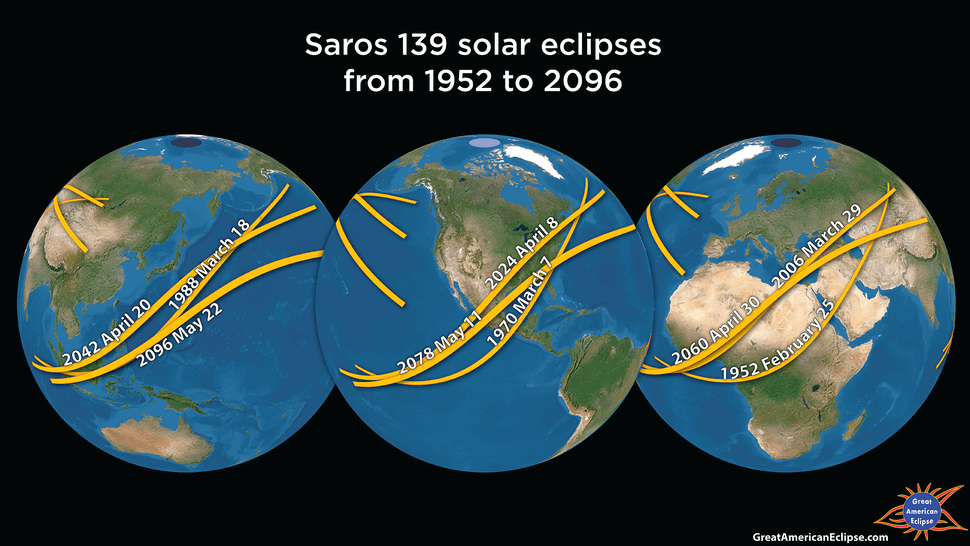When the moon’s central shadow races at more than 1,500 mph (2,400 km/h) across North America in an April 8 total solar eclipse, the resulting spectacle will be both unique and part of a progressing cycle.
This path of totality (the path of the moon’s dark shadow across the face of the Earth) will be narrow, at just 115 miles (185 kilometers) wide, and it will cross parts of Mexico, the U.S. and Canada in a never-to-be-repeated route across the continent, lasting just100 minutes. Only from within that path will viewers experience darkness during the daytime, dropping temperatures and nocturnal animal behavior — and only from within that path will it be possible to look at the totally eclipsed sun’s beautiful corona with the naked eye. (Note: DO NOT look directly at the sun at any time other than totality without wearing a pair of certified solar eclipse glasses.)
For most of the 40 million people living in the path of totality, it will be a once-in-a-lifetime event, but solar eclipses are the product of a long-term pattern that repeats on far bigger timescales than human life.
Related: April 8 total solar eclipse: The best places to stargaze near the path of totality
All solar eclipses come in families called Saros. Every 223 lunations — orbits of the moon around Earth — a near-identical moon shadow is projected onto Earth’s surface to cause an eclipse. That works out to 6,585.3 days, or 18 years, 11 days, 8 hours, according to NASA.
That eight hours is critical. It means that three solar eclipses following each other in the same Saros occur a third of the way around the globe. The total solar eclipse on April 8 is part of Saros 139, which was responsible for a total solar eclipse across Africa 18 years, 11 days, 8 hours earlier, on March 29, 2006. Precisely 18 years, 11 days, 8 hours after April 8, 2024 — on April 20, 2042 — the same Saros will produce a total solar eclipse in Asia.

Those eight hours, however, guarantee that a similar path of totality will revisit the same part of the globe every fourth repetition. This period of precisely 669 lunations — or 54 years, 33 days — is called the exeligmos.
So the same celestial mechanics that will cause the total solar eclipse on April 8 produced a total solar eclipse in North America on March 7, 1970. That path of totality occurred slightly to the east, throwing Mexico, the U.S. (Florida, Georgia, South Carolina, North Carolina and Massachusetts) and Canada (Nova Scotia and Newfoundland) under the moon’s shadow. After April 8, it will next visit North America again on May 11, 2078, when Mexico and the U.S. (Louisiana, Mississippi, Alabama, Florida, Georgia, South Carolina, North Carolina and Virginia) will experience totality.
But Saros do not last forever; across the centuries, they rise and fall across Earth’s surface, eventually skipping off into space. Saros 139 has been producing solar eclipses since 1501 and will do so until 2763, but it will peak on July 16, 2186, when it will produce a totality lasting 7 minutes, 29 seconds — the longest total eclipse in 10,000 years, and until at least the year 6000.